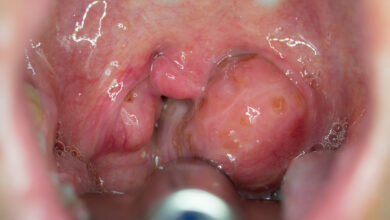MACULAR DEGENERATION: A Visual Enigma! *

Do you know what you call something that has no known cause and no known treatment?
MACULAR DEGENERATION!
That’s right! The leading cause of vision loss—more than cataracts and glaucoma, combined— has thus far eluded the curious investigative eye of medical science. Researchers cannot find a specific cause other than it occurs most often in people over age 50, Caucasians, and in folks whose parents, siblings, and grandparents had it. Thus age, race, and genetics are the major players in your odds of having it.
Vision loss differs from Blindness. “Blindness” refers to the total absence of visual images while “vision loss” implies one’s field of vision is only partially disrupted. Unfortunately, in Macular degeneration, “central vision” is affected. That’s the area of the eye whose function is focusing on objects, reading, driving, and recognizing faces. Peripheral (side) vision is unaffected, but seeing well-enough to do fine work and seeing detail becomes very difficult. One or both eyes may be affected. When only one eye has Macular degeneration, the “good” eye takes over for the bad and symptoms are less noticeable. Having Macular degeneration in both eyes, though, is problematic.
The Macula, also called the Fovea Centralis, is a small area of specialized cells in the center of the Retina. When we look straight at an object, it is the Macula that fixes on that object, converts its light images to electrical signals, and transmits the signals through the optic nerve to the brain. In the back area (occipital lobes) of the brain, those signals are translated into the images we see. So if the macula is damaged for whatever reason, our central vision is blurred, distorted, or absent. The unaffected areas of the retina around the macula are still able to transmit normal images so only partial vision loss occurs.
Macular Degeneration (MD) occurs in two types and three phases.
TYPES:
Dry macular degeneration— 85-90% of MD cases. The gradual breakdown of the
vision-sensitive cells of the macula distort images sent to the brain.
Wet macular degeneration—10-15% of cases. Abnormal blood vessels grow under the
retina. These vessels can leak blood and fluid causing swelling and damage to the
macula.
PHASES:
Early phase—visual symptoms are absent. Yellow fat deposits (Drusen) are seen in the
retina and are diagnostic of Early Phase MD.
Intermediate phase—vision loss begins. Larger Drusen are seen. Pigment changes are
seen in the retina.
Late phase—vision loss has progressed and become troublesome.
These designations and phases are really important only to the doctors who treat macular degeneration and mean nothing to patients. They are academic classifications, only. All patients really understand and care about is they can’t see to drive a car, read a book, watch TV, or recognized someone. And these classifications don’t make a bit of difference in treatment, either, because there is no specific, effective treatment. The best chance patients have for preserving vision is early detection and preventive treatment.
Since genetics is a major factor in MD, regular preventive eye exams are an absolute must for anyone with a family history of Macular degeneration. An annual “dilated eye exam” should be done to carefully examine the macula for any changes. Amsler Grid testing to detect central vision distortion should be done regularly. Fluorescein Angiography where fluorescent dye is injected into an arm vein and the eye scanned looking for leaky blood vessels is helpful. But the simplest, most reliably informative test is Optical Coherence Tomography. This is like doing a CT scan of the eye and retina. It gives doctors very distinct pictures of the layers of the retina and the macula allowing early detection of changes of degeneration. I’ve had this test three times, and the pictures are amazingly clear. Having the eye doctor says you’re free of Macular Degeneration is very reassuring.
But what do you do if the eye doctor says you have early phase Macular Degeneration? Do you sell your TV, give away your books, give your spouse your car keys, or make funeral arrangements? Absolutely not!!
Macular degeneration progresses slowly so you have some time to adopt healthy lifestyle changes.
Smokers need to stop smoking — smoking doubles the risk of Macular
Degeneration
Sedentary people need to lose weight and exercise
Diet high in fruits and vegetables should be begun (kale, spinach, broccoli, squash,
eg.)
Eating foods high in Zinc (beef, pork, lamb) is recommended.
Eat Milk, cheese, yogurt, whole-grain cereal, whole wheat bread
Take Anti-oxidants: LUTEIN and ZEAXANTHIN — aid in prevention.
Vitamin therapy: C 500 mg/day, E 400 IU/d, Lutein 10 mg/d, Zeaxanthin 2 mg/d,
Zinc Oxide 80 mg/, Cupric Oxide (Copper) 2 mg/d.
Medical science, as far as I know, has not come up with any specific drug or procedure that targets the cause of Macular Degeneration. However, the progression of wet macular degeneration has been slowed by specialized drug injections and laser treatments.
When the causes all appear to be about something genetically inherited, there isn’t much you can do about it. Unless you die, you can’t stop aging. If you’re born Caucasian you can’t change that. And if you have family members with macular degeneration, you may have the gene for it. These are all factors important for developing macular degeneration. So you’re stuck. Your chances of having it are significant so you should begin preventive measures right away.
References: https://www.macular.org/what-Macular-Degeneration
Https://nei.nih.gov/health/macular degeneration/armd_facts
https://www.mayoclinic.org/diseases-conditions/dry-macular-degeneration/symptoms-causes
*A 2018 article in the Lancet medical journal mentions new treatments being investigated for the treatment of neovascular (wet) macular degeneration. An injection into the eye with a chemical that inhibits the growth of new blood vessels (seen in wet MD) “has markedly decreased the prevalence of visual impairment in populations worldwide.” The majority of Macular Degeneration cases, however, are the dry, atrophic type, and “currently, no proven therapies for atrophic disease are available, but several agents are being investigated in clinical trials.” They also state “future progress is likely to be from improved efforts in prevention and risk-factor modification,” and efforts to develop new drugs.
Mitchell P, Liew G, Gopinath B, Wong TY “Age-related macular degeneration” Lancet 2018 Sep 29;392(10153):1147-1159.




